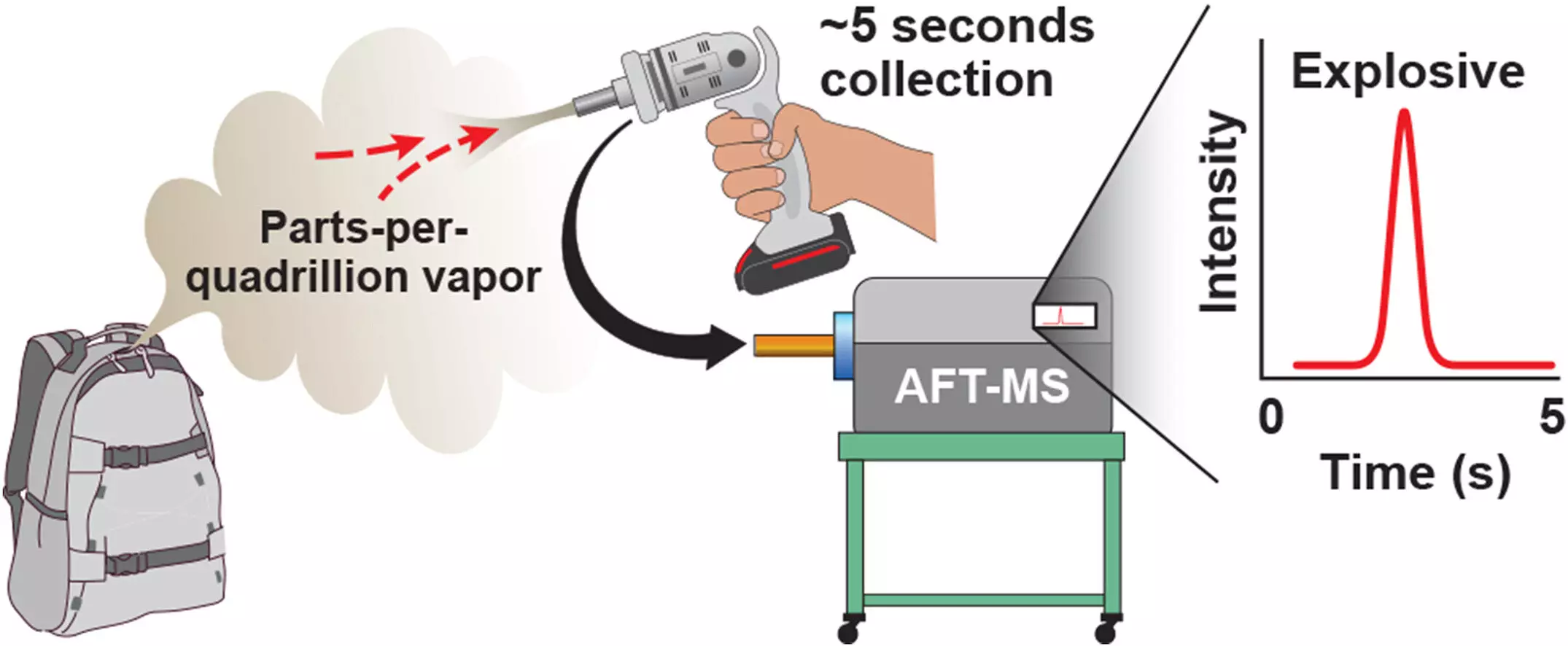Scientists have recently made significant strides in the field of explosives detection by developing a cutting-edge method that can identify trace amounts of hard-to-detect explosives from over eight feet away. This breakthrough, published in the journal Talanta, marks a significant improvement in the detection of substances like nitroglycerin and RDX, the explosive found in C-4. The method utilizes highly sensitive equipment that can recognize even the smallest particles of these explosives amidst a sea of common air molecules such as nitrogen and oxygen. This remarkable technology can identify explosives at levels as low as less than 10 parts per quadrillion, showcasing its unprecedented sensitivity and accuracy.
The recent research conducted by scientists at the Department of Energy’s Pacific Northwest National Laboratory has paved the way for detecting explosives from distances ranging from two to eight feet. Previously, the team could only detect these explosive materials from a distance equivalent to the width of a finger. However, with the latest advancements, the technology now has the capability to detect explosives from a distance extending beyond the length of an arm. This expanded distance detection is a significant achievement that has the potential to revolutionize the field of explosives detection and improve security measures.
Commercial Applications
The promising technology developed by the team at Pacific Northwest National Laboratory has attracted the attention of BaySpec Inc., a Silicon Valley-based instruments manufacturing company specializing in spectral sensing. The company has obtained a license to utilize the explosive detection technology and plans to create a commercial product for the detection of explosives and narcotics by the year 2025. This collaboration between the research team and BaySpec Inc. highlights the potential for real-world applications of this groundbreaking technology in various industries, including defense and security.
One of the key challenges in explosives detection lies in detecting materials with low vapor pressure, as they release minimal molecules into the air, making them difficult to capture and analyze. However, the team at Pacific Northwest National Laboratory has successfully overcome this challenge by developing a method known as standoff detection, which allows for the identification of low-vapor explosives like nitroglycerin and RDX from several feet away. This innovative approach has the potential to be adapted for detecting other explosives, drugs, and chemical threats, further enhancing security measures.
Technological Breakthroughs
The success of the explosive detection technology can be attributed to several technological breakthroughs, including the development of a powerful handheld air sampler that can draw in large volumes of air per minute. This air sampler, in conjunction with an atmospheric flow tube and mass spectrometer, allows for the efficient collection and analysis of air samples containing trace amounts of explosives. The atmospheric flow tube, in particular, plays a crucial role in ionizing target molecules before sending them to the mass spectrometer for detection, significantly increasing the sensitivity and accuracy of the detection process.
The recent advancements in explosives detection technology represent a significant milestone in enhancing security measures and combating potential threats. The innovative methods developed by the team at Pacific Northwest National Laboratory have the potential to revolutionize the field of explosives detection and significantly improve safety and security measures in various industries. With continued research and development in this area, we can look forward to a future where the detection of explosives and other dangerous materials is more efficient, accurate, and reliable.


Leave a Reply